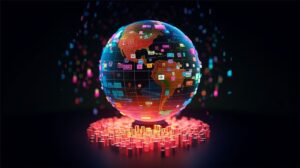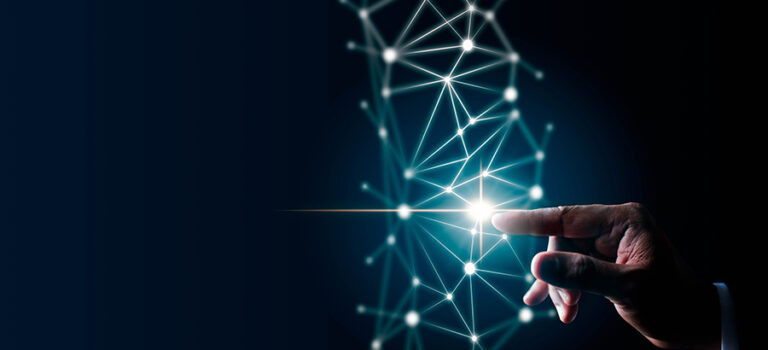Embracing the Digital Lifestyle Navigating the Future with Confidence
Digital Lifestyle
The Pillars of a Digital Lifestyle
The digital lifestyle is built on several key pillars that define how we interact with technology. These pillars include connectivity, automation, accessibility, and personalization.
Connectivity: The internet is the backbone of the digital lifestyle. High-speed 5G and emerging 6G networks have made it possible to stay connected anywhere, anytime. Whether it’s video calls with family across continents, streaming high-definition content, or collaborating with colleagues in real-time, connectivity ensures that distance is no longer a barrier.
Automation: From smart thermostats that adjust to your preferences to AI-powered virtual assistants that manage your schedule, automation simplifies tasks and saves time. In 2025, automation extends beyond homes to workplaces, where AI tools streamline workflows, analyze data, and enhance productivity.
Accessibility: The digital lifestyle is inclusive, offering tools and platforms that cater to diverse needs. Accessibility features in apps, voice-activated devices, and adaptive technologies ensure that everyone, regardless of ability, can participate in the digital world.
Personalization: Algorithms and AI tailor experiences to individual preferences, from curated streaming playlists to personalized shopping recommendations. This customization makes technology feel like an extension of ourselves, enhancing user satisfaction.
Benefits of Embracing the Digital Lifestyle
The digital lifestyle offers numerous advantages that have transformed how we live, work, and play. Here are some of the most significant benefits:
Enhanced Productivity: Tools like cloud-based collaboration platforms, project management software, and AI assistants have revolutionized productivity. Remote work, once a niche concept, is now mainstream, allowing professionals to work from anywhere while maintaining efficiency.
Access to Information: The internet provides instant access to a wealth of knowledge. Online courses, tutorials, and forums empower individuals to learn new skills, from coding to cooking, at their own pace.
Global Connectivity: Social media platforms like X enable real-time communication and community-building across the globe. Whether it’s sharing ideas, joining interest-based groups, or staying updated on global events, the digital lifestyle fosters connection.
Convenience and Efficiency: Smart home devices, e-commerce, and digital banking have made everyday tasks more convenient. Ordering groceries, paying bills, or controlling home appliances can now be done with a few taps on a smartphone.
Entertainment and Creativity: Streaming services, virtual reality gaming, and content creation platforms offer endless entertainment options. The digital lifestyle also empowers creators, from YouTubers to TikTok influencers, to share their talents with a global audience.
Challenges of the Digital Lifestyle
While the digital lifestyle offers immense opportunities, it also comes with challenges that require careful navigation.
Digital Overload: Constant notifications, endless scrolling, and the pressure to stay connected can lead to burnout. The average person in 2025 spends over 7 hours a day on screens, raising concerns about mental health and attention spans.
Privacy Concerns: With increased connectivity comes the risk of data breaches and privacy violations. Cybersecurity threats, such as phishing and hacking, are more sophisticated than ever, necessitating robust protection measures.
Digital Divide: Not everyone has equal access to technology. Rural areas and underserved communities may lack high-speed internet or modern devices, creating disparities in education, work, and social participation.
Dependency on Technology: Overreliance on digital tools can erode traditional skills, such as face-to-face communication or manual problem-solving. Striking a balance between digital and analog experiences is essential.
Misinformation: The rapid spread of information online can amplify false narratives. Platforms like X are working to combat misinformation, but critical thinking remains vital for discerning truth from fiction.
Practical Tips for Thriving in a Digital Lifestyle
To fully embrace the digital lifestyle while mitigating its challenges, consider the following strategies:
1. Set Digital Boundaries: Establish screen-time limits and designate tech-free zones, such as the bedroom or dining area. Tools like app timers and “Do Not Disturb” modes can help you stay focused and present.
2. Prioritize Cybersecurity: Use strong, unique passwords, enable two-factor authentication, and keep software updated. Invest in a reputable antivirus program and be cautious about sharing personal information online.
3. Curate Your Digital Environment: Unfollow accounts that don’t add value to your life and customize app notifications to reduce distractions. Follow creators and communities on platforms like X that align with your interests and goals.
4. Embrace Lifelong Learning: Take advantage of online courses and resources to stay competitive in a rapidly changing job market. Platforms like Coursera, Udemy, and YouTube offer affordable ways to upskill.
5. Practice Digital Wellness: Incorporate mindfulness practices, such as meditation or journaling, to counter digital overload. Apps like Headspace or Calm can guide you toward mental clarity.
6. Stay Informed: Verify information before sharing it, especially on social media. Cross-check news with reputable sources and use fact-checking tools to combat misinformation.
7. Support Digital Inclusion: Advocate for policies and initiatives that bridge the digital divide, such as affordable internet access and device donation programs for underserved communities.
The Future of the Digital Lifestyle
As we look ahead, the digital lifestyle will continue to evolve with advancements in technology. Artificial intelligence, augmented reality, and the Internet of Things (IoT) will further blur the lines between the physical and digital worlds. For instance, AI-powered wearables could monitor health metrics in real-time, while AR glasses might transform how we shop, learn, and interact.
However, the future also demands responsibility. Ethical considerations, such as data privacy and AI bias, will shape how technology is developed and deployed. Governments, companies, and individuals must collaborate to ensure that the digital lifestyle remains inclusive, secure, and sustainable.
In 2025, platforms like X are at the forefront of this transformation, offering spaces for innovation, dialogue, and community. By staying engaged and informed, we can harness the power of the digital lifestyle to create a future that balances progress with well-being.
Conclusion
The digital lifestyle is not just a trend; it’s a fundamental shift in how we live. By embracing its opportunities and addressing its challenges, we can navigate this connected world with confidence and purpose. Whether you’re a remote worker, a content creator, or simply someone who loves the convenience of smart technology, the digital lifestyle offers endless possibilities to enhance your life.
As we move forward, let’s commit to using technology mindfully, fostering inclusivity, and prioritizing well-being. The digital age is here to stay—let’s make it a force for good.






